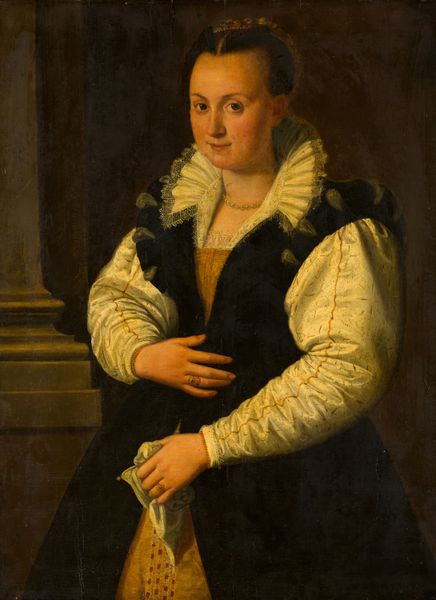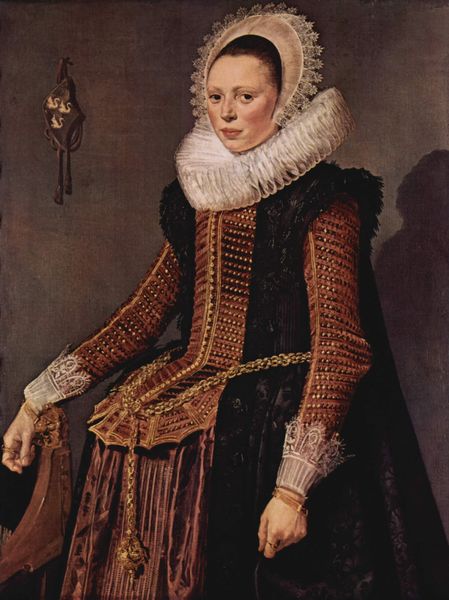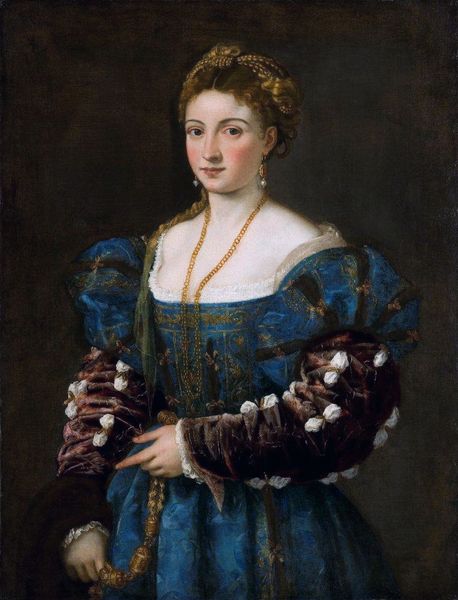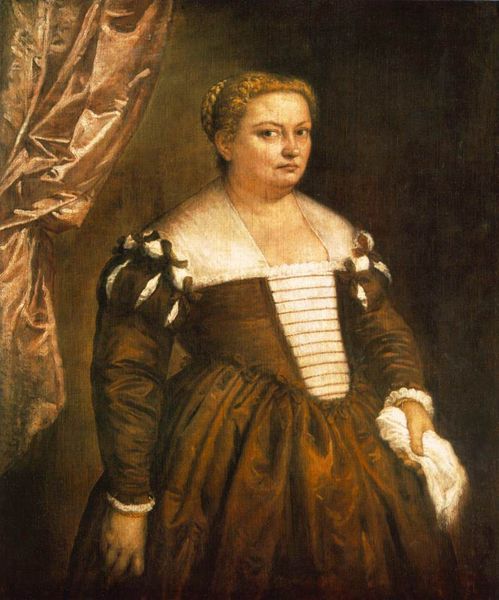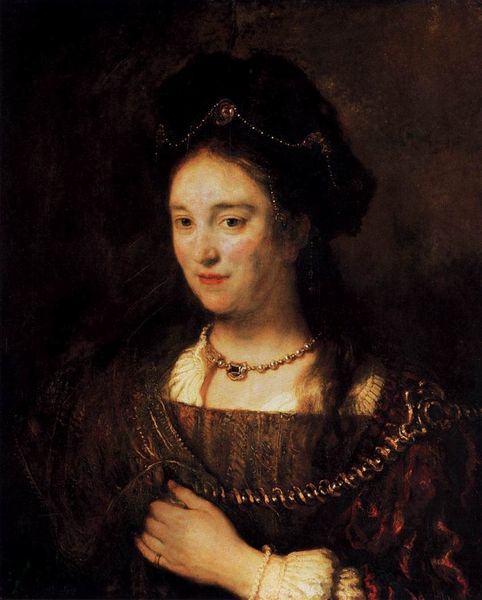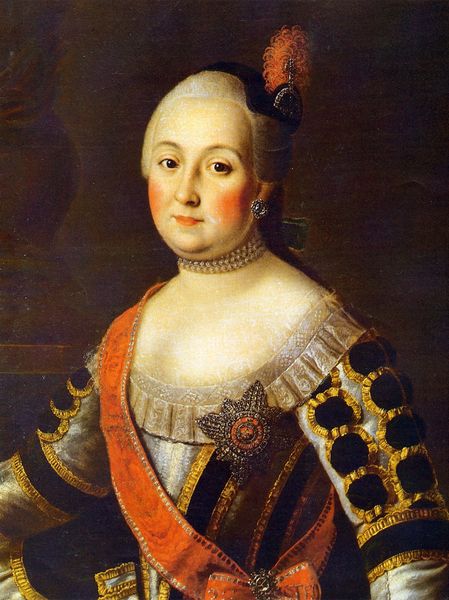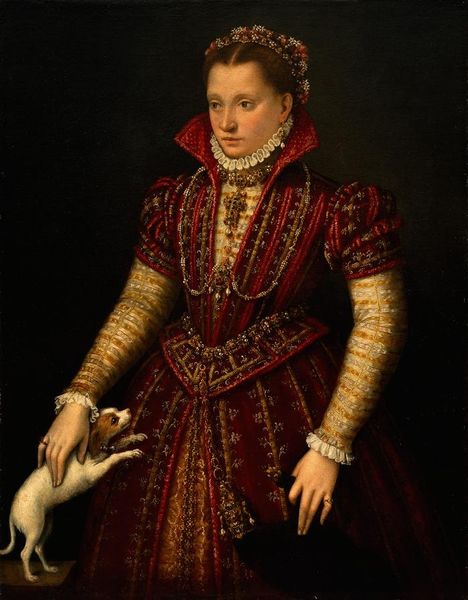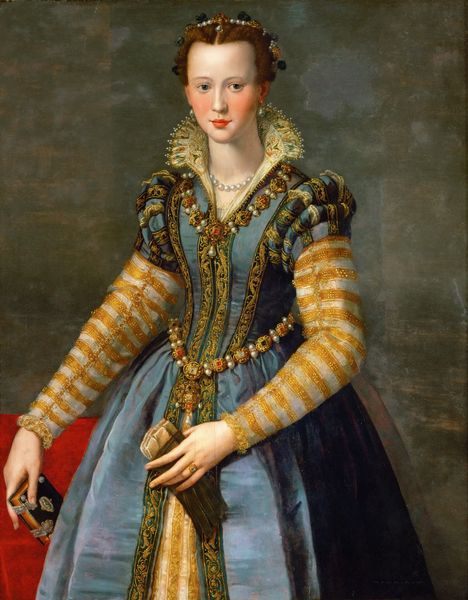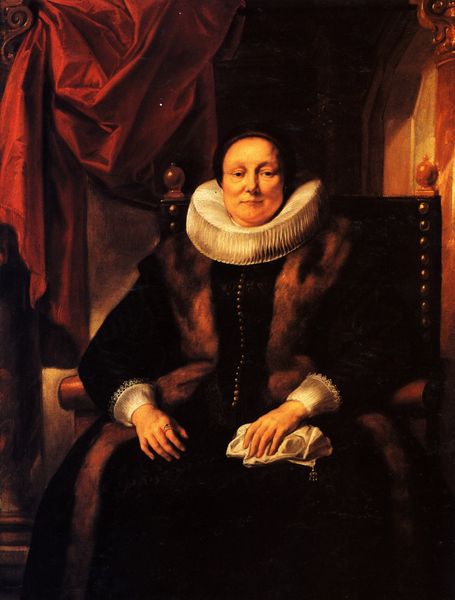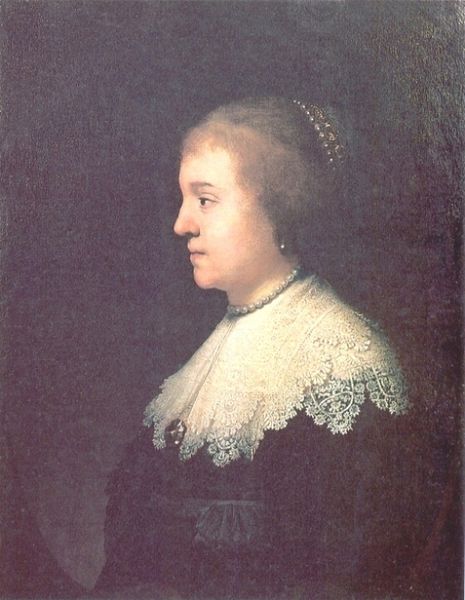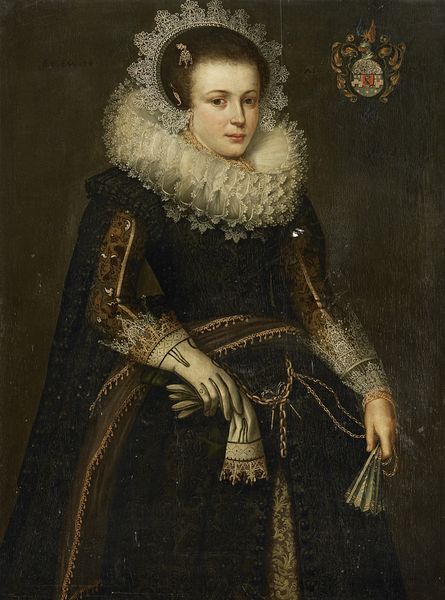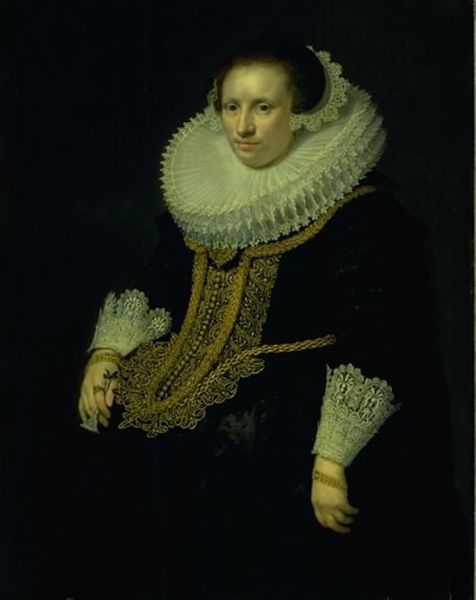
painting, oil-paint
#
portrait
#
high-renaissance
#
venetian-painting
#
painting
#
oil-paint
#
figuration
#
history-painting
Copyright: Public domain
Editor: This is Titian's "Portrait of Lavinia, the Artist's Daughter," painted in 1561 with oil. It's striking; she looks so elegant, yet there's a quietness to the composition. What strikes you most about it? Curator: Well, considering Titian's place in Venetian society and how patronage worked, I think this painting operates on several levels. The opulent clothing and jewelry signify Lavinia's elevated status within Venetian society, and reflects on Titian’s own success. This portrait served not just as a likeness, but also as a declaration of social achievement and family pride. Editor: That's a great point. It’s not *just* a painting of his daughter; it’s a statement. Does the detail in her dress relate to this? Curator: Absolutely. Venetian sumptuary laws existed to regulate displays of wealth. Note the detail he lavishes on her dress, jewels, and even the fan – this portrait subtly navigates these laws while broadcasting affluence and good taste. Her garb and the history she embodies connects to the public image Titian wants to convey. Is it pride, promotion, love...perhaps all three? Editor: That’s fascinating. It changes how I see it completely; less personal, more a public declaration. I wonder how Lavinia herself felt about this role she was playing. Curator: Exactly! And think about how its display within a private collection now continues to shape how this artwork functions in our understanding of that period. What a multi-layered performance of class, affection and promotion that shapes its meaning even now. Editor: This has truly deepened my understanding – from daughter to symbol. Curator: It's fascinating how artwork serves public functions, often transcending its personal context.
Comments
No comments
Be the first to comment and join the conversation on the ultimate creative platform.
